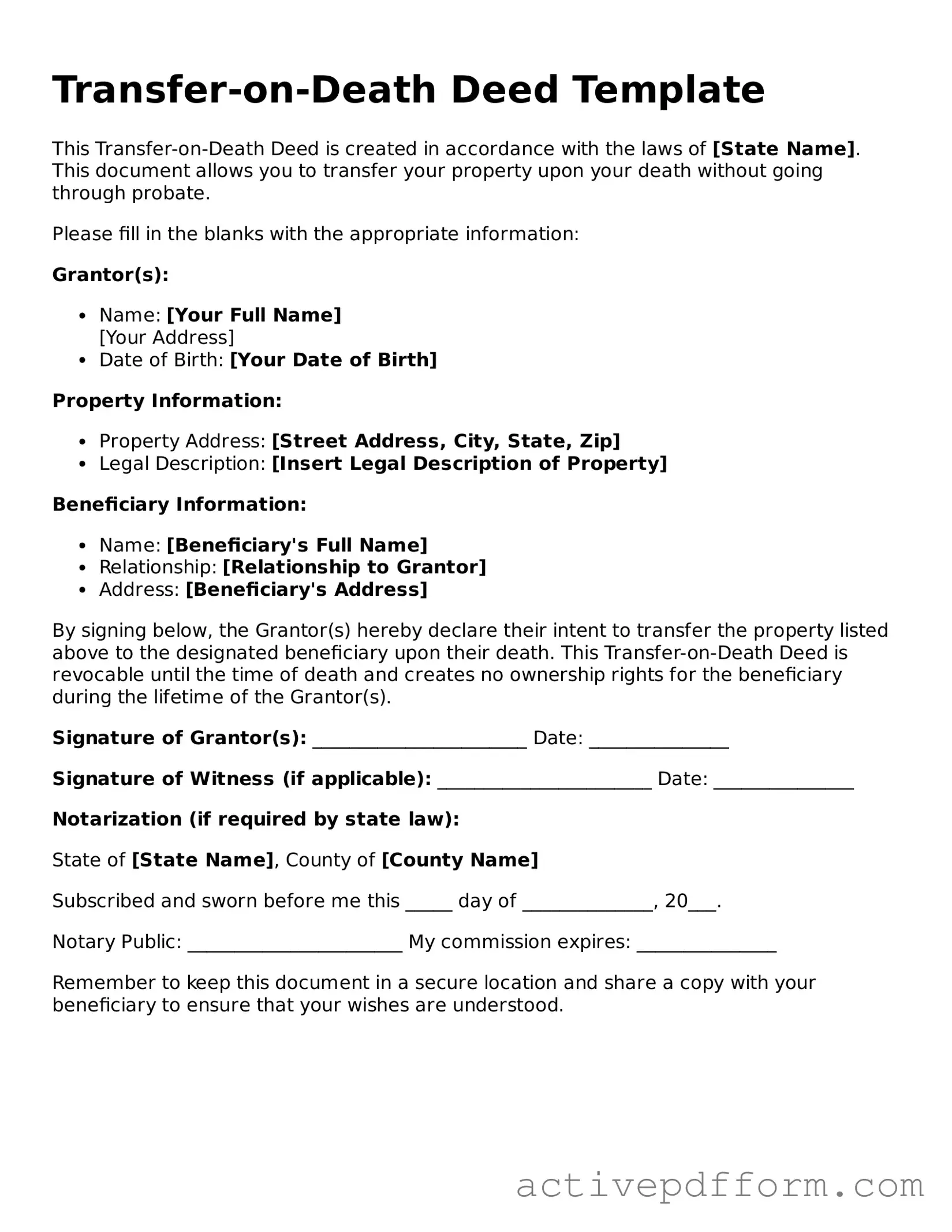Transfer-on-Death Deed Template
This Transfer-on-Death Deed is created in accordance with the laws of [State Name]. This document allows you to transfer your property upon your death without going through probate.
Please fill in the blanks with the appropriate information:
Grantor(s):
- Name: [Your Full Name]
[Your Address]
- Date of Birth: [Your Date of Birth]
Property Information:
- Property Address: [Street Address, City, State, Zip]
- Legal Description: [Insert Legal Description of Property]
Beneficiary Information:
- Name: [Beneficiary's Full Name]
- Relationship: [Relationship to Grantor]
- Address: [Beneficiary's Address]
By signing below, the Grantor(s) hereby declare their intent to transfer the property listed above to the designated beneficiary upon their death. This Transfer-on-Death Deed is revocable until the time of death and creates no ownership rights for the beneficiary during the lifetime of the Grantor(s).
Signature of Grantor(s): _______________________ Date: _______________
Signature of Witness (if applicable): _______________________ Date: _______________
Notarization (if required by state law):
State of [State Name], County of [County Name]
Subscribed and sworn before me this _____ day of ______________, 20___.
Notary Public: _______________________ My commission expires: _______________
Remember to keep this document in a secure location and share a copy with your beneficiary to ensure that your wishes are understood.
